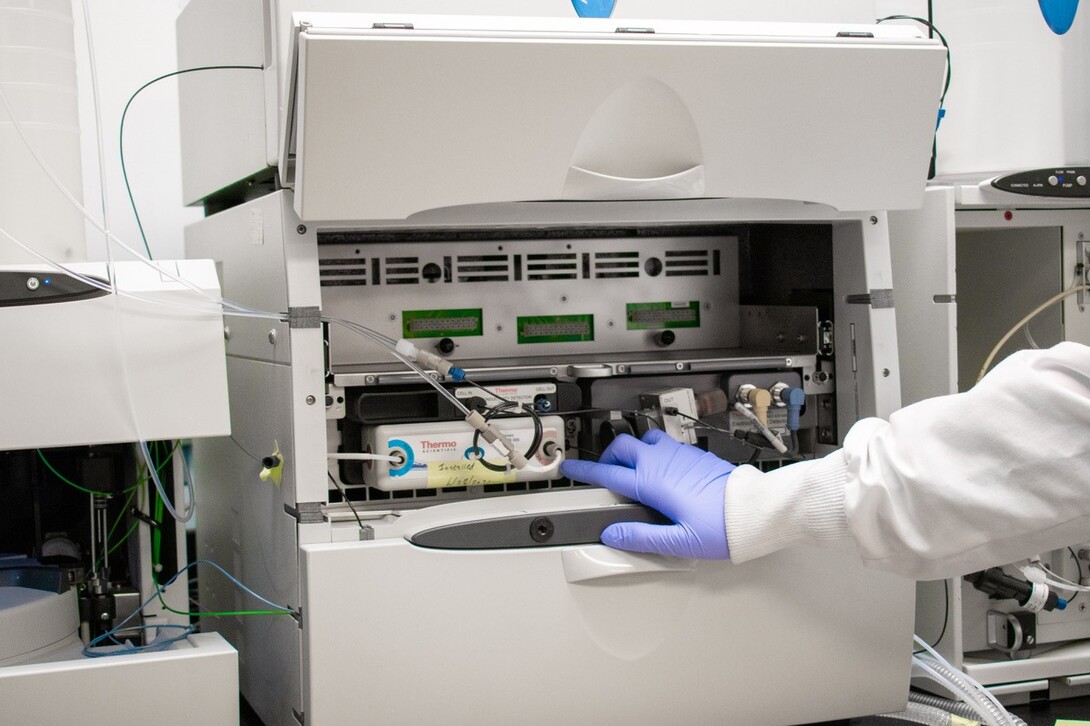
So, what exactly does the equipment do?
“The new equipment will be used mainly to support and test a variety of samples from research projects across all of the University of Nebraska campuses and will support water monitoring and soil and tissue testing by local agencies,” said Water Science Laboratory Director Dan Snow.
Specifically, the ICS is used for water chemistry analysis; measures concentrations of major anions like fluoride, chloride and nitrate; and has automation and additional detectors that allow development of additional methods for water testing. The new instrument replaces a system that was almost 20 years old. The ICS 5000+ has a gradient pump, an auto-diluter and multiple detectors, making it much more sophisticated and versatile and allowing for more rapid, automated, and sensitive analyses, as well as application of new methods.
The Agilent 720 ICP-OES replaces a 20-year-old Perkin Elmer atomic absorption (AA) spectrophotometer. The ICP-OES measures elemental concentrations by exciting elements through an argon gas-powered plasma torch. The energy emitted is measured by wavelengths that are characteristic of their respective elements. ICP-OES is used for rapid and highly sensitive measurement of metals and trace elements such as sodium, potassium, iron, copper, lead, and magnesium in water or soil samples. The ICP-OES comes with an autosampler and can scan and simultaneously measure over 30 elements for fast, low-cost detection at part per million levels in many samples.
Snow said these additions allow the lab to run more samples at a greatly reduced cost. The federal loan program provided permanent transfer of the equipment from a U.S. Food and Drug Administration (FDA) laboratory in St. Louis. The four-year-old equipment is valued at over $200,000.
The WSL is excited to start new research to help improve water and soil quality through its new equipment. Researchers, faculty, students and partners are encouraged to learn how the lab’s new and existing equipment can strengthen their research. Visit the lab’s website for more information on equipment and upcoming projects at https://watercenter.unl.edu/facilities-and-equipment







